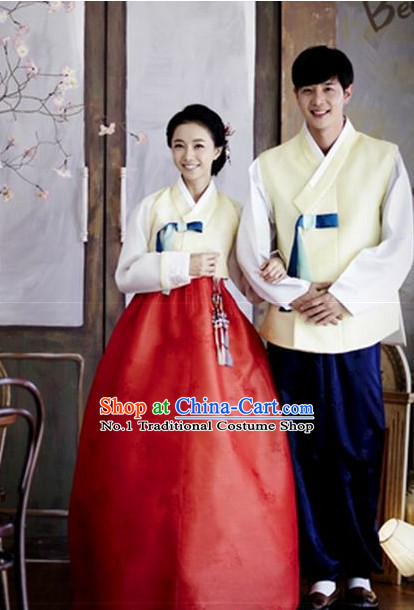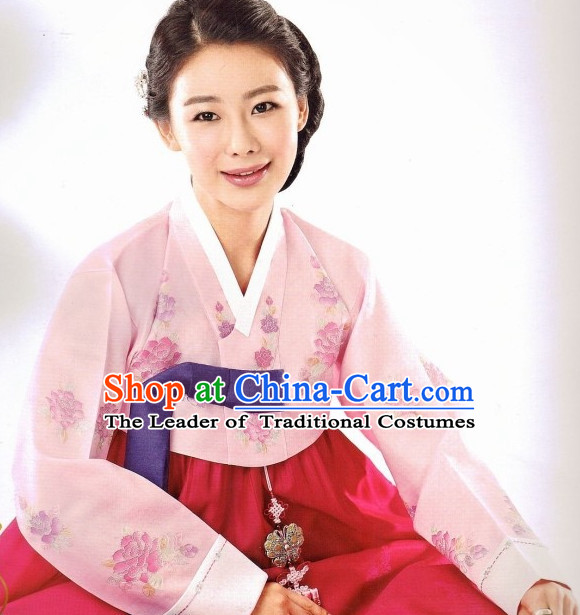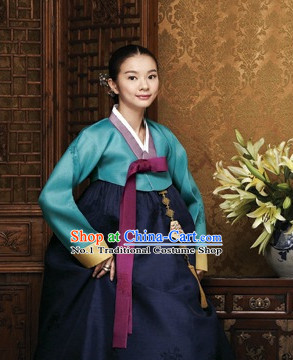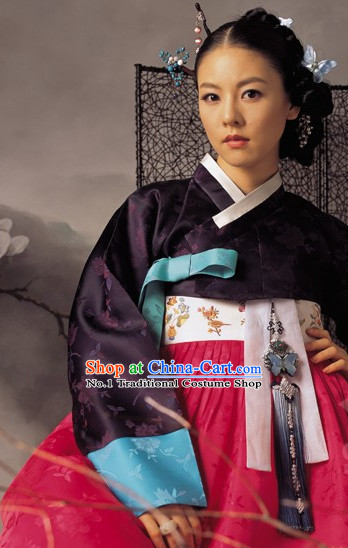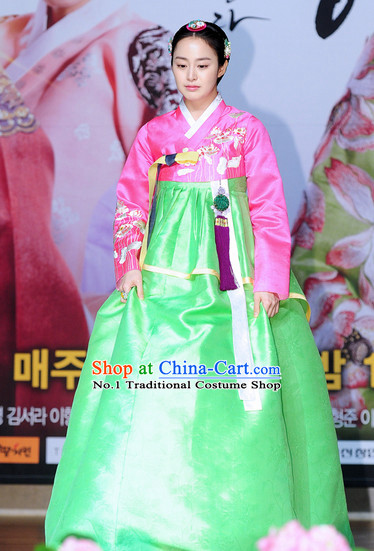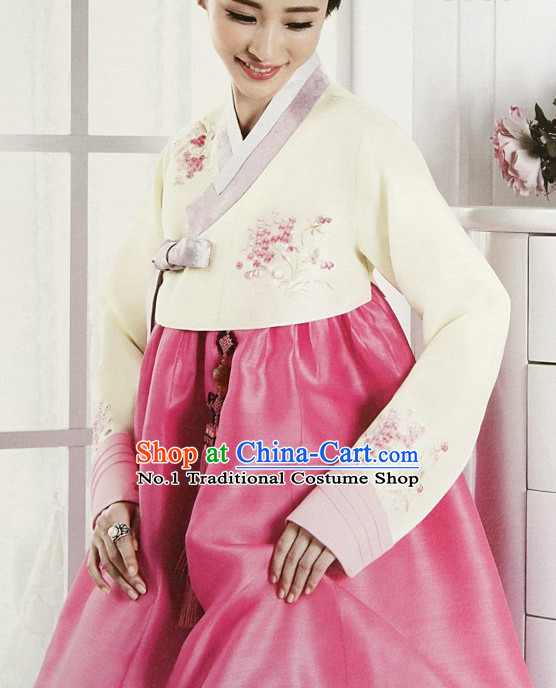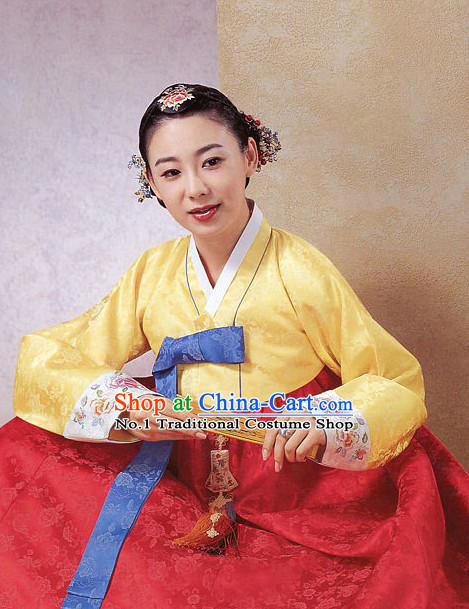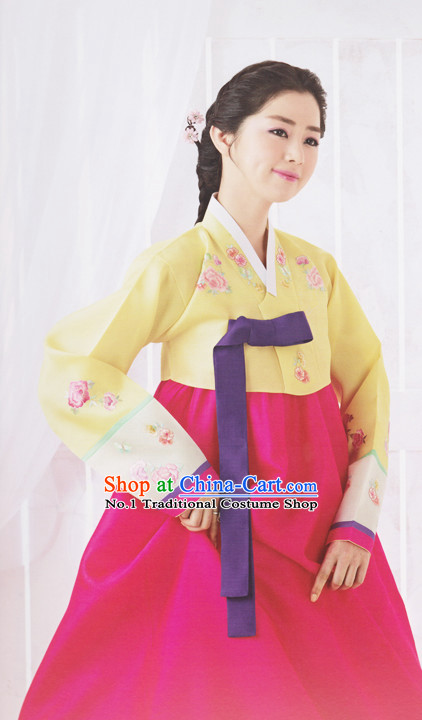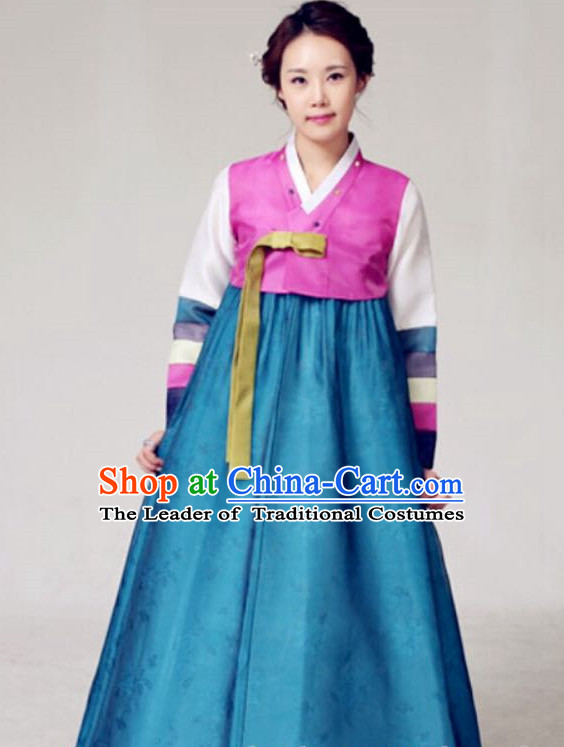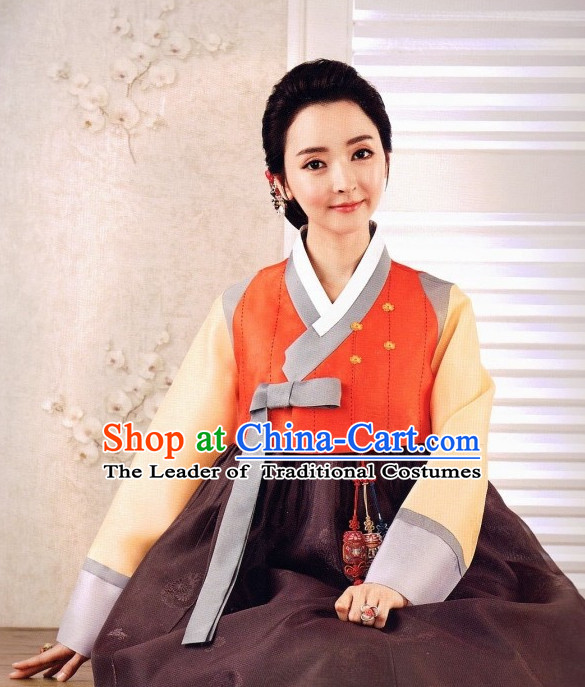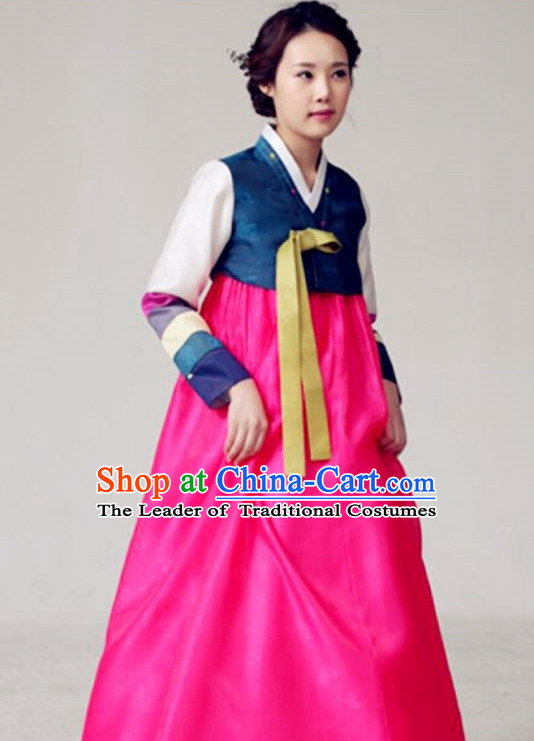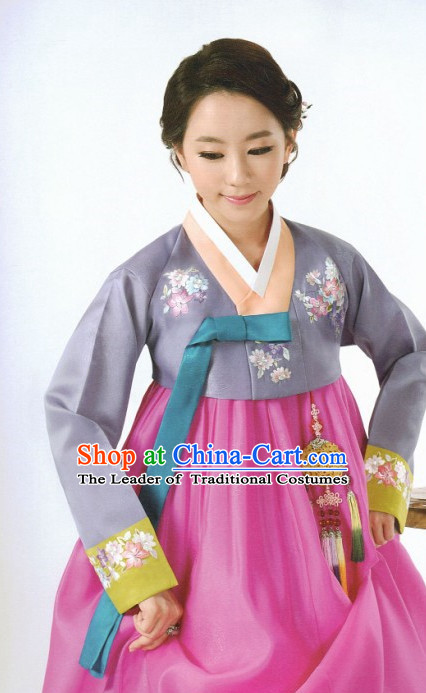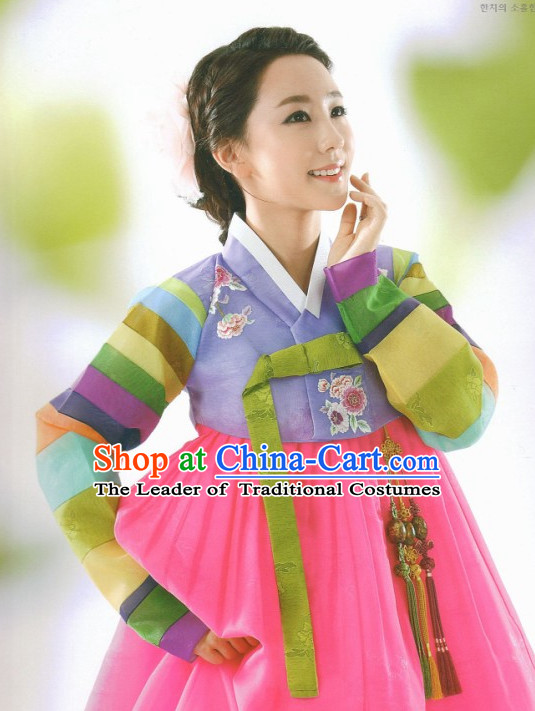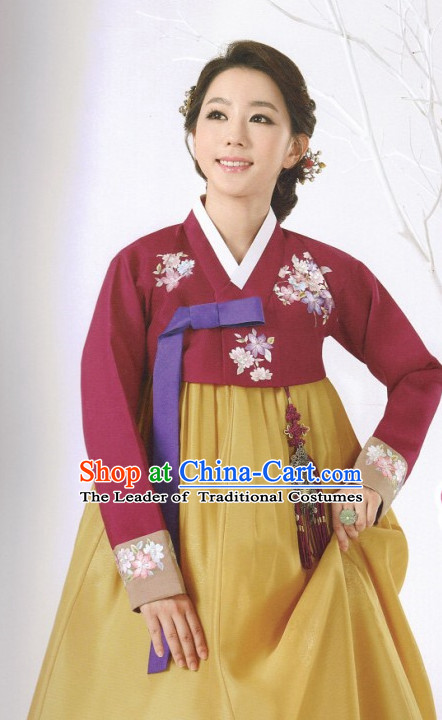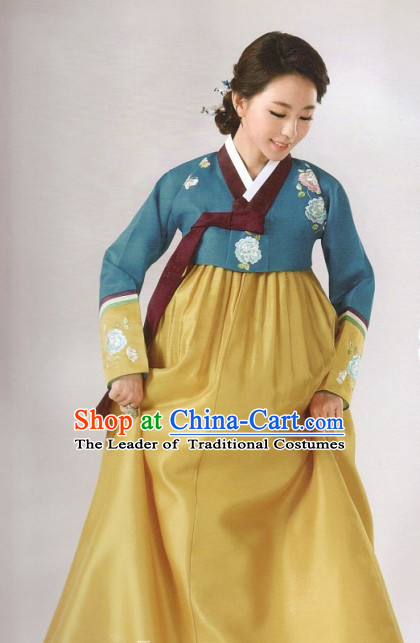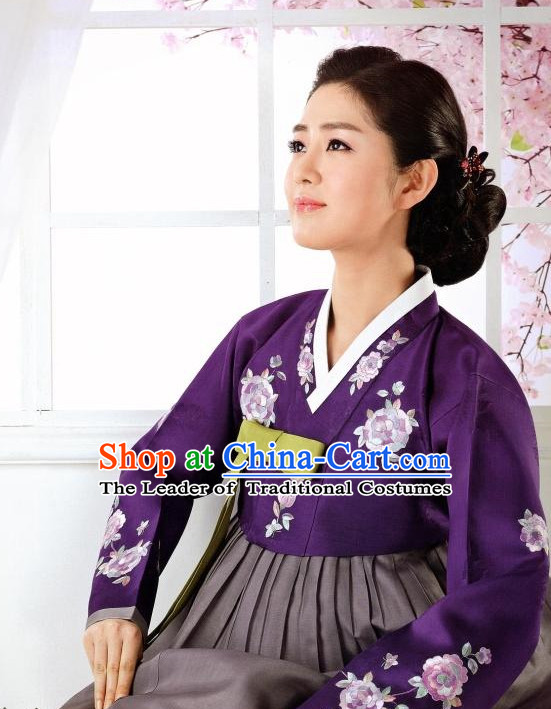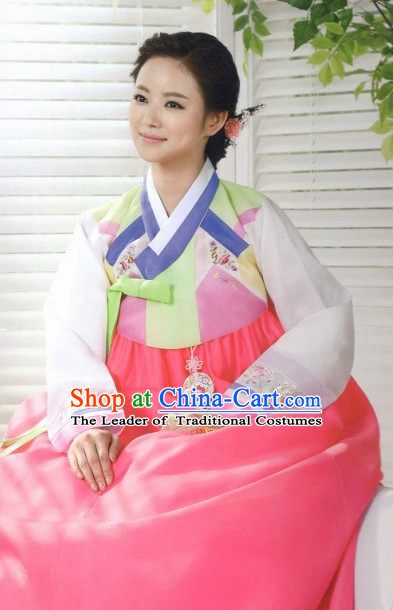
Click Related Pictures for More Audios:
In South Korea, traditional clothing known as hanbok is renowned for its elegance, sophistication, and unique design.
It represents the history and traditions of Korean culture, reflecting the aesthetics and values of its people.
In this picture, we see a complete set of hanbok attire, including a skirt, top, pants, and accessories, providing women with an elegant and stylish option.
The design and details of this outfit showcase the essence of Korean culture, such as an emphasis on symmetry, proportion, and color.
Hanbok is typically made from silk or cotton fabrics and features bright colors and distinctive patterns.
When worn by women, their hair is styled in braids, and they adorn themselves with various accessories like hairpins, earrings, necklaces, and bracelets.
These accessories not only add to the beauty but also symbolize identity and status.
Additionally, hanbok includes a long, flowing top called a "jeogori" and loose-fitting pants.
This design aims to showcase feminine grace and dignity.
Hanbok holds significant importance in Korean culture as it represents traditional values and customs.
Wearing hanbok is a way to celebrate special occasions, events, or family gatherings.
It is also part of Korean heritage that attracts people worldwide to appreciate its beauty and uniqueness.
By appreciating and learning about hanbok, we can better understand the history and development of Korean culture and its influence on world art.
